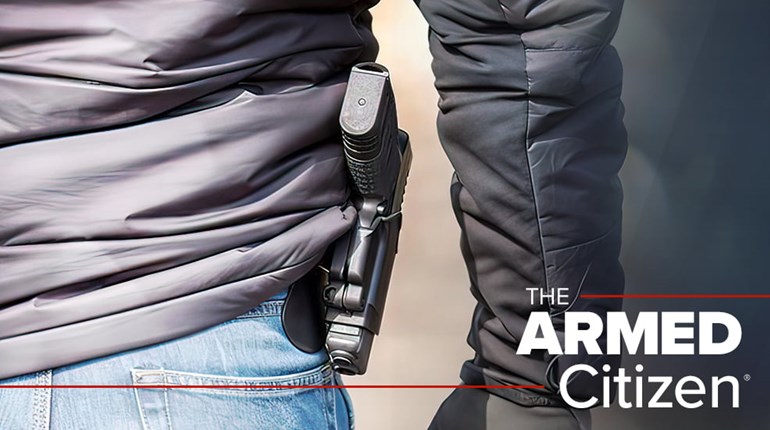
X-Treme Bullets – Full disclosure time: We think everybody should reload (or handload) at least some of their ammunition. And scratch that “full disclosure” business—we concede this is simply a bias, and one to which we admit without repentance.
“Why?” is where our rationale may need elucidation. We’d stop short of compelling it, of course, but we esteem the process greatly because of the plain, pervasive benefits: Broader and deeper knowledge of shooting and firearms, as well as the option to shoot more from a given cost basis. If there’s a downside to that, it’ll be your turn to explain. We certainly know of none.
For those already in the fold, cost saving is usually where reloading starts, though rarely where it ends. Our posited broader, deeper knowledge comes in making your rifle, shotgun or pistol behave in a way you control to a far greater extent than is possible with “factory” ammo, nor does such control extend only to tiny, hyper-accurate shot groups. This is emphatically not an indictment of factory ammo, either; never have the boxed offerings been better or more varied than at present (take a peek at Gorilla and Hornady results for some in-house proofs). We’ve actually cut down the variety of calibers we reload for this very reason: Balancing all the costs/savings against quality for real-world needs makes factory a winner in several of our favorite calibers.“For those already in the fold, costs saving are usually where reloading starts, though rarely where it ends.”
There are other times and needs, however, and that’s where X-Treme component bullets enter the picture. From a plant in Carson City, Nev., or a shiny new facility in Lewiston, Idaho, some of the best combinations of cost and quality we know of are regularly shipping out. First Gear, therefore, offers up a couple of our favorites for your consideration.
.451 – Most reloaders will instantly associate this dimension with .45 ACP, and there is no doubt that’s where most .451 X-Tremes wind up. We’ve shot most every offering in the 185- to 230-grain range, and particularly liked the extremes (pun intended): the 185 FP and 230 RN. We concede that these are “vanilla” choices, but how can you argue with success? For snappy slide action—Steel Challenge, anyone?—downloaded 185s are tough to beat, and there’ll be absolutely no doubt about your hits. It’s a two-county “ding!”
And for recoil of the traditionally “slow roll” variety, as well as famed accuracy, your 1911 or most any .45 will gobble up those round-nosed heavies with the reliability of, say, gravity.

If you make us pick though, our favorite is at least offbeat, and perhaps even heretical: the massive 255-grain FP. That we essentially steal it from a revolver cartridge (.45 Colt) really gets heads waggling.
Our application of this bullet to an unlikely case is a great example of the sort of thing only reloading can (easily) teach or deliver. Many folks have the impression that as bullet weight increases, so must recoil. It would seem logical, and of course would even be true if velocity remained constant. E=mv2 tells a different tale, and nothing makes that clear like handloading gussied up with just a little math: With the X-Treme 255, you can make the .45 ACP shoot well softer than “factory” 9 mm.
In case you’re wondering why you’d want to do this, a good example is easy to come by. The capper for a recent extended pistol test—where we shot nearly 6,000 (out of 13,500) rounds built with X-Treme 255-grain flat points—were Level II or above USPSA matches. Our SIG 320 easily made “power factor” at 174.2 (165 or more is required to score major), yet the recoil energy we had to manage as we clambered through the stages was 27.5-percent less than 115-grain 9 mm minor would have been with a comparable safety margin at the chrono stage. A small price to pay, we thought, for a 20-percent scoring advantage on B, C and D hits.
We found accuracy remained excellent, too; we were accused of lobbing artillery rounds at downrange falling steel. Who cares as long as it’s accurate artillery?
You’d rightly guess we keep a bunch of these handy.
.355 (.380/9 mm) – This is an atypical (for us) lightweight actually designed for .380 ACP, and weighing in at a dainty 100 grains. As with the .45 185s, we use them for the very rapid slide reciprocation they aid, and for disciplines—again, Steel Challenge comes to mind—where the flat trajectories begat by higher velocity is useful.

Pay attention to seating depth here. Most manuals suggested dimensions we found about .010-.020 too long, and ultimately renders the assembled cartridge mechanically weak. The resulting delicacy is due to the small contact surface area between the shank of the bullet and the interior of the case, which limits the tension/friction available to hold the bullet in the case mouth. That rapid slide action we like? It can be rapid enough to essentially “throw” the bullet out of the case as the chambering cycle ends. More crimp doesn’t solve this like you’d expect, and risks undersizing the bullet and marring otherwise-good accuracy. Mostly, this is just annoying, but make up some dummies with no powder or primer, and experiment to see that this won’t happen with your finished rounds.“Another bonus with these: Near the top end of published charges, they’re a superb, inexpensive training round.”
Another bonus with these: Near the top end of published charges, they’re a superb, inexpensive training round. The quick cycling helps newer shooters develop proper grip technique without the relative pounding of more energetic mid-weights, or the cost of softer-feeling but more expensive loads using heavy bullets. They’re also delightful in our carbines, but make ’em stout in this application so they are sure to clear these longer bores.
Our .380 ACPs see these by the carton too. This is actually a heavyish bullet for the kurz nines, and more to our liking for two reasons. As with the 255 .451s, we think they are softer-shooting per unit of down range energy. This is a taste, however, and some might disagree—which is fine. What is not a taste, however, is the functioning of these bullets in older style blowback actions (many, indeed most newer .380s actually run from a locked action, which makes them perform better in general than generations of predecessors). Simply, these deeper-seated bullets do a better job of controlling powder disposition in the case—how powder lies—which in turn makes the burn more consistent. Though grip mechanics are still crucial, this helps reliability in blowback guns more than you might think.
Now go reload!
Visit X-Treme Bullets at xtremebullets.com. See their “Daily Deal” and sign up for notifications here.
































